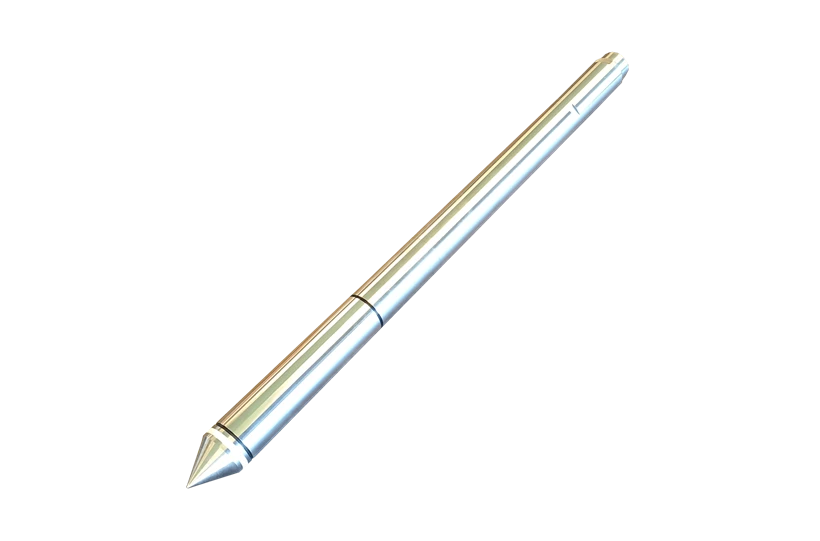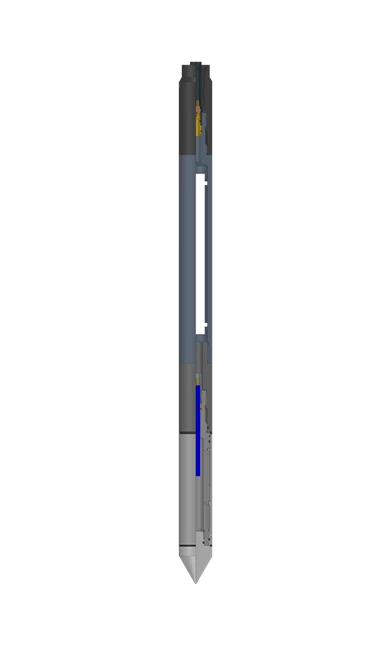

The Geomagnetic module can be used to detect anomalies in the magnetic field that could indicate the presence of a large mass of ferromagnetic material in the soil. Its range is a radius of approximately 6.6 feet (2 meters).
A magnetometer is a scientific instrument used to measure the strength and/or direction of the magnetic field. A mass of ferromagnetic material creates a detectable disturbance in this magnetic field. This magnetic anomaly produces a weak alternating magnetic field that is detected by the magnetometer in the Geomagnetic module. It's very useful for the detection of
Geomagnetic module details
The Geomagnetic module can be housed behind a dummy tip or behind a 15 cm2 CPT cone made of a high-grade non-magnetic steel. It consists of a non-magnetic housing and has a standard tapered thread on top for connection to the string of CPT-sounding tubes. A “North” marking can be found on the exterior of the housing (Y-axis). The fluxgate sensor in XYZ direction enables to determine the position and orientation of an object. A built-in bidirectional inclinometer in line with the XY sensors with a measuring range of +/-25° (accuracy better than 0.1°) allows for determination of the orientation of the magnetic field.
This product delivers accuracy better than 0,5% of the full scale (FS) and a resolution better than 5nT (10nT for the 250,000 nT version).
| Geomagnetic module | |
|---|---|
| Sensor | 3 Axis Magnetometer |
| Mag. Resolution | 5 nT (10nT for the 250,000 nT version) |
| Measuring range | 100,000 nT or 250,000 nT |
| Sensitivity | 1nT |
| Length of the magnetometer module (excl. cone or dummy tip) | 350 mm | 14 in |
| Length in combination with a dummy tip | 500 mm | 20 in |
| Length in combination with a non-magnetic S15 type (piezo-)cone | 750 mm | 30 in |
| Diameter | 44mm | 1.75 in |
| Resolution in Z-axis direction | 10 mm | 0.4 in |

Looking for advice on your drilling project? Our specialist Greg is happy to help.